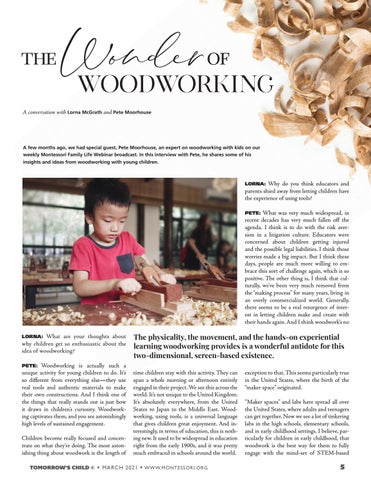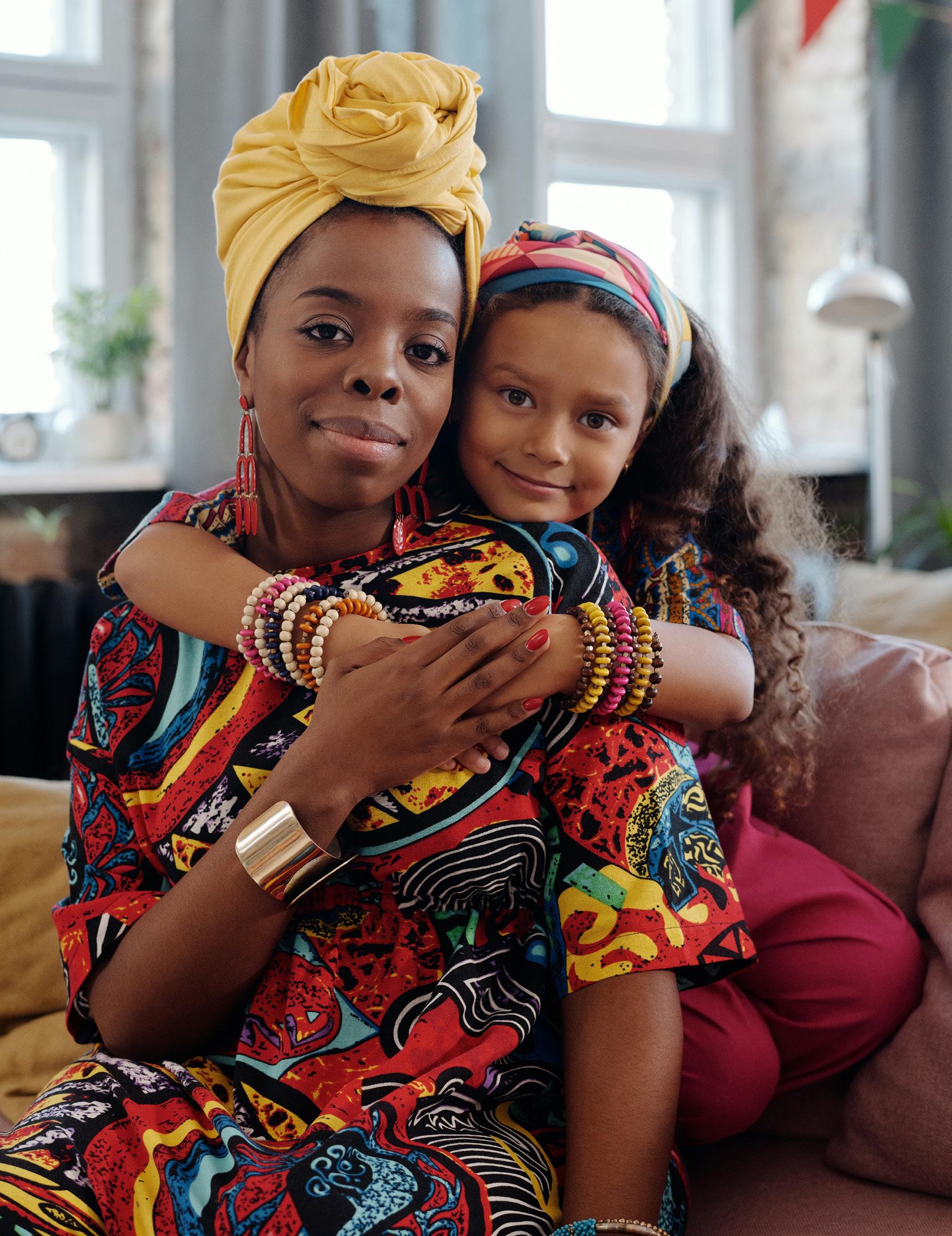Woodworking A conversation with Lorna McGrath and Pete Moorhouse
A few months ago, we had special guest, Pete Moorhouse, an expert on woodworking with kids on our weekly Montessori Family Life Webinar broadcast. In this interview with Pete, he shares some of his insights and ideas from woodworking with young children.
Why do you think educators and parents shied away from letting children have the experience of using tools? LORNA:
What was very much widespread, in recent decades has very much fallen off the agenda. I think is to do with the risk aversion in a litigation culture. Educators were concerned about children getting injured and the possible legal liabilities. I think those worries made a big impact. But I think these days, people are much more willing to embrace this sort of challenge again, which is so positive. The other thing is, I think that culturally, we’ve been very much removed from the “making process” for many years, living in an overly commercialized world. Generally, there seems to be a real resurgence of interest in letting children make and create with their hands again. And I think woodwork’s no PETE:
What are your thoughts about why children get so enthusiastic about the idea of woodworking? LORNA:
Woodworking is actually such a unique activity for young children to do. It’s so different from everything else—they use real tools and authentic materials to make their own constructions. And I think one of the things that really stands out is just how it draws in children’s curiosity. Woodworking captivates them, and you see astonishingly high levels of sustained engagement.
The physicality, the movement, and the hands-on experiential learning woodworking provides is a wonderful antidote for this two-dimensional, screen-based existence.
PETE:
Children become really focused and concentrate on what they’re doing. The most astonishing thing about woodwork is the length of
time children stay with this activity. They can span a whole morning or afternoon entirely engaged in their project. We see this across the world. It’s not unique to the United Kingdom. It’s absolutely everywhere, from the United States to Japan to the Middle East. Woodworking, using tools, is a universal language that gives children great enjoyment. And interestingly, in terms of education, this is nothing new. It used to be widespread in education right from the early 1900s, and it was pretty much embraced in schools around the world.
TOMORROW'S CHILD © § MARCH 2021 § WWW.MONTESSORI.ORG
exception to that. This seems particularly true in the United States, where the birth of the “maker space” originated. “Maker spaces” and labs have spread all over the United States, where adults and teenagers can get together. Now we see a lot of tinkering labs in the high schools, elementary schools, and in early childhood settings. I believe, particularly for children in early childhood, that woodwork is the best way for them to fully engage with the mind-set of STEM-based
5















